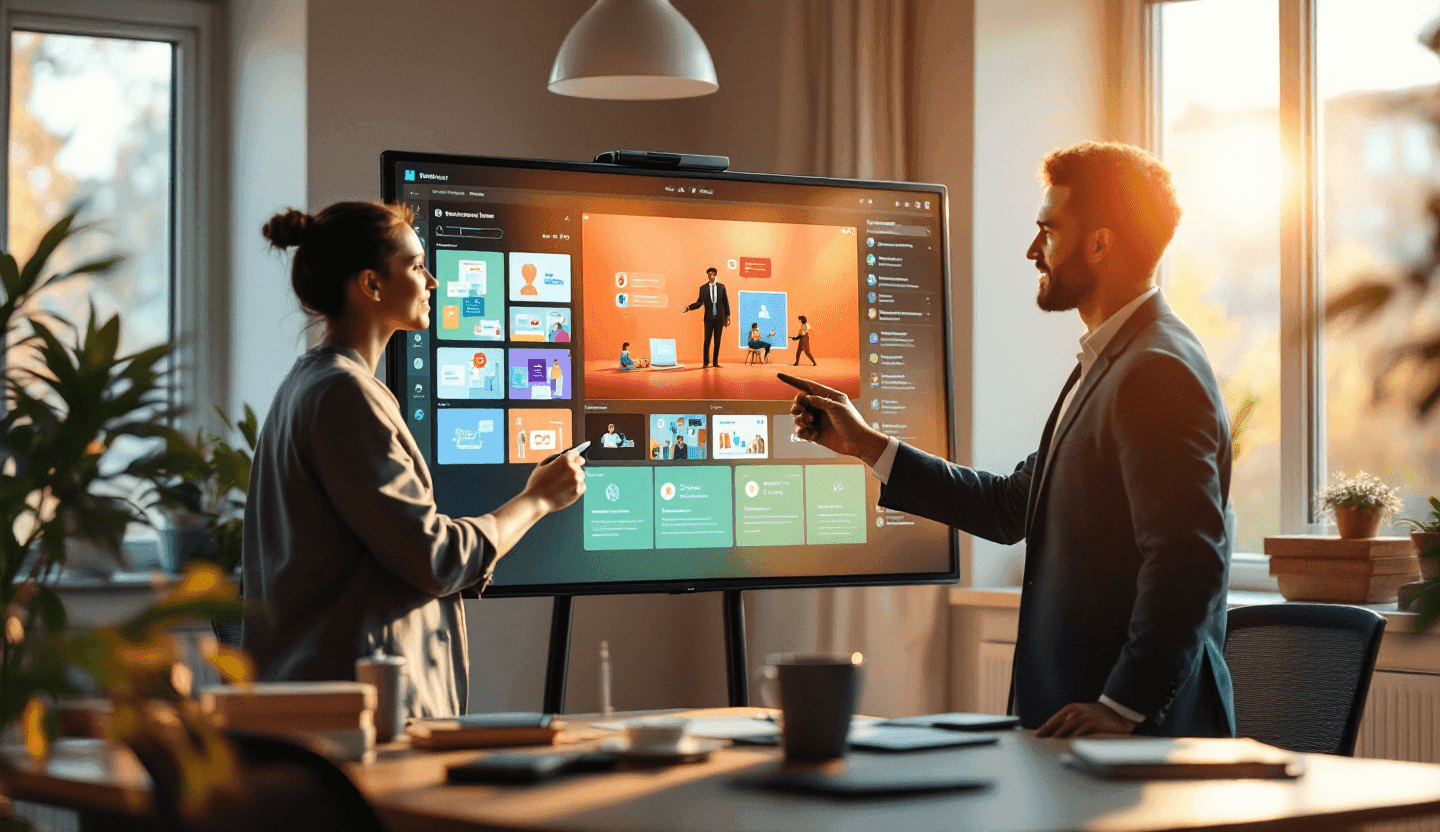social media
Master Social Media Marketing: Effective Strategies & ROI Tips
Social media marketing has evolved fast—and the old playbook of posting consistently and waiting for organic reach to build momentum no longer works at scale. If you want meaningful brand visibility today, you need a clear strategy, a content engine, and a thoughtful approach to paid campaigns. This guide walks you through how to build a modern, effective program that blends organic presence with smart social media advertising to drive real business outcomes.
What social media marketing means right now
At its core, social media marketing is how brands use platforms like Instagram, TikTok, LinkedIn, YouTube, X, and Pinterest to reach audiences, tell stories, and drive action. But here’s the shift: organic reach is shrinking on most major platforms, pushing businesses to treat social primarily as a paid channel for scale. That doesn’t mean organic is dead—it means organic’s job is different. Organic content builds credibility, nurtures community, and fuels creative testing, while paid expands reach, drives new demand, and accelerates conversions.
A winning approach respects both. The smart move is to design your social media marketing strategy with this division of labor in mind.
Start with goals, then design the strategy
Every great strategy starts with clarity. What outcome are you chasing in the next quarter—awareness, engagement, leads, or revenue? Your goals determine your platforms, creative formats, and budget.
Awareness goals prioritize reach, video views, and ad recall. Engagement goals focus on conversations and saves. Lead and revenue goals rely on conversion-optimized campaigns, well-structured offers, and strong landing pages. Think in funnels: introduce the brand, deepen consideration, then convert, using a sequence of messages that move people forward.
Consider your strengths too. If you have a highly visual product, Instagram Reels and TikTok might lead. Selling to niche technical buyers? LinkedIn and YouTube can be powerful. Build a high-level plan: which platforms, what posts, how often, what budget, and what success looks like.
Choosing the best platforms for your goals
There’s no single “best social media platform for marketing”—only the best fit for your audience and objectives. Meta (Facebook and Instagram) still offers unmatched scale and mature ad delivery, making it a foundation for many brands. TikTok excels at discovery and rapid creative testing, with influential effects on search and culture. LinkedIn is the B2B powerhouse, ideal for thought leadership, account-based marketing, and recruitment, though CPMs are higher. YouTube is a long-term brand builder with strong intent via Shorts and search-driven content. Pinterest captures mid- to high-intent planners, especially in lifestyle, home, and retail. Reddit rewards authenticity and niche relevance and can be useful for product research and community-driven campaigns.
Choose two to three platforms to start, master them, then expand. Spreading thin across six channels dilutes quality and slows learning.
Organic vs. paid: set expectations and roles
Organic content sets tone, builds trust, and offers social proof. Treat it like your storefront—it should be consistent, on-brand, and genuinely helpful. Use it to publish educational clips, behind-the-scenes stories, customer highlights, and thought leadership. It’s also a great testbed for creative: if a post performs well organically, it often makes a strong ad.
Paid distribution is your reach engine. Allocate budget to brand awareness campaigns to introduce yourself to new audiences, then retarget with product benefits, case studies, and offers. On many platforms, creative is the primary lever—algorithms are extremely good at finding the right people once you provide compelling, clear, and conversion-ready assets.
Content creation for social media: build a repeatable engine
Every scroll is a competition for attention. Lead with a hook that earns the first two seconds, then deliver value quickly. For short-form video, open with a bold claim, question, or visual movement. For carousels, let the first frame carry a single promise. For long-form, favors clarity over cleverness.
Anchor your ideas in what the audience is searching for and talking about. Social platforms are increasingly search-driven (TikTok and YouTube especially), so align posts to real questions and keywords. Tools like MagicTraffic help here by turning search data into content ideas, headlines, and captions optimized for your targeted keywords across both your website and social platforms. This creates consistency between SEO topics and social narratives, making repurposing easier and improving discoverability. For marketers looking to deepen their grasp, exploring SEO Marketing Strategies to Grow Your Business in 2025 is highly recommended.
Build content themes: education, product, proof, culture, and community. Rotate formats to avoid creative fatigue: Reels/TikToks, carousels, live sessions, polls, and UGC. Use accessible practices—captions on video, clear audio, strong contrast, and concise copy—to expand reach and improve engagement rates.
Campaign types and when to use them
It helps to design campaigns around specific outcomes rather than vague “activity.” Brand awareness campaigns introduce your story to net-new audiences; measure reach, CPM, and ad recall proxies. Engagement campaigns boost social proof and algorithmic momentum; watch saves, comments, and view-through rates. Lead generation is useful for B2B offers or high-consideration products; optimize form quality, not just volume. Conversion campaigns drive purchases and trials; optimize for ROAS, CAC, and conversion rate. Retention and loyalty programs encourage second purchases and referrals; use sequential messaging and customer-only promos.
Tactically, sequence matters. For example, run a broad awareness video, then retarget viewers with a product demo, then a testimonial, then a time-bound offer. Sequential storytelling compounds trust.
Paid social foundations that actually move ROI
Creative is the new targeting. Privacy changes have reduced the precision of interest-based audiences, which means your ad’s message and structure must do more of the filtering. Use specific use cases, problems, and outcomes in the first few seconds to self-select the right viewers. Rotate variations: hooks, angles, CTAs, and visuals. Freshness matters; aim to refresh winning ads before frequency and performance decay.
Budgeting and pacing should respect learning phases. Instead of heavy day-parting or micromanaging bids, feed the algorithm clean signals and steady budgets. Broad audiences often work better than hyper-niche targeting when your creative is clear. Use campaign objectives aligned to your goal (awareness, traffic, conversions), and ensure your pixel and server-side events are accurate and deduplicated.
Landing pages must mirror your ad’s promise. Message match can lift conversion rates dramatically. Keep forms short, speed fast, and social proof prominent. For lead gen, compare in-platform forms with website forms for quality; sometimes cheaper leads cost more later.
How to measure success in social media marketing
Set a measurement plan before launching. Decide which metrics indicate progress by stage, and how you’ll judge incrementality versus mere attribution. Use platform analytics, UTM parameters, and GA4 for consistency, then test lift with holdouts or geo experiments when budgets allow.
Core KPIs to watch:
- Awareness: reach, CPM, video view rate, ad recall proxies
- Engagement: engagement rates, saves, comments, shares, VTR at key time marks
- Traffic: CTR, cost per click, time on site, bounce rate
- Conversions: conversion rate, CAC, ROAS, LTV:CAC ratio
- Efficiency: blended MER, contribution to total sales, cost per incremental lift
Avoid optimizing to vanity metrics. Engagement with no downstream action is a warning sign unless it’s explicitly an awareness play. If you’re B2B, optimize across the full funnel—MQL to SQL to pipeline, not just lead count.
How to improve ROI with social media ads
Think in experiments. Test one variable at a time—hook, offer, format—so you know what caused the lift. Creative testing frameworks like 5 hooks × 5 angles can quickly surface winners. Use dynamic creative to discover combinations, but graduate proven assets into standalone ads for consistent scaling.
Control frequency to reduce ad fatigue; most brands see diminishing returns beyond a frequency of 4–7 per week for the same creative. Rotate UGC, founder-led videos, and motion graphics. For eCommerce, try product demos, comparisons, and before/after sequences. For B2B, use value-forward carousels, short explainer videos, and case study snippets.
Use your data responsibly. Build first-party audiences (site visitors, email lists, purchasers) for retargeting and lookalikes. Shorten retargeting windows to hit recency while managing costs. When scaling, gradually raise budgets on winning campaigns rather than resetting the learning phase with constant structural changes.
Platform nuances that matter
Meta remains the most versatile paid engine with powerful optimization. TikTok rewards authenticity and fast iteration; shoot native, avoid heavy polish, and let creators lead. LinkedIn’s targeting is unmatched for roles and industries; lead magnets and thought leadership carousels perform well, but watch your CPL relative to pipeline value. YouTube mixes performance and brand—pair Shorts for reach with longer videos for education. Pinterest is intent-rich; use seasonal content, trend-responsive visuals, and shoppable formats. Reddit requires community fluency—ads should sound like a helpful comment, not a billboard.
Each platform favors different creative rhythms, but the principles are the same: clear hooks, audience-specific value, and consistent testing.
Build a workflow that scales content and learning
The hardest part of social media marketing for businesses is sustaining consistent quality. Create a weekly cadence: plan topics, batch-produce assets, schedule posts, and review results. Repurpose top-performing blog posts into carousels, short videos, and threads. Extract quotes from webinars. Turn customer support answers into FAQs. The more your content system recycles and compounds, the more efficient your program becomes.
This is where an AI-supported stack helps. MagicTraffic, for example, uses search data to identify high-intent topics and generates content tailored to targeted keywords for both your website and social channels. That means your social posts don’t float in isolation—they connect to what people are already searching for and what your site ranks for. You can also spin out variations of headlines, hooks, and captions to speed up testing without sacrificing quality. For more detailed guidance, the Google SEO Guide: How to Rank Higher on Google Search in 2024 is a great resource.
Adapting to the new reality: paid-led, organic-powered
Acknowledging that organic reach is limited changes how you plan. Use organic to show who you are, support existing customers, and test creative. Use paid to reach new audiences and drive measurable outcomes. When money and messaging work together, you get compounding gains: better learning data, stronger creative, and more reliable growth.
Put it all together
Success on social isn’t about posting more—it’s about aligning goals, platforms, creative, and measurement into a system that learns every week. Start with a clear strategy, pick channels where your audience already pays attention, and build a content engine tuned to the questions people ask and the problems you solve. Fund paid distribution to unlock scale, then use analytics to refine. If you want an edge, let tools like MagicTraffic connect your SEO insights with your social content, so every post pulls in the same direction. This integration of Content Marketing principles enables your brand to thrive in both search and social ecosystems.
In a feed that never stops moving, clarity and consistency win. Define what you want to achieve, tell stories that earn attention, and let data guide the next iteration. That’s how you master social media marketing today.



